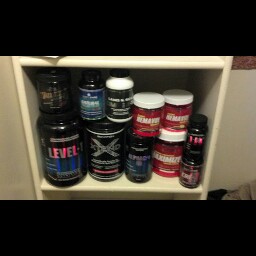Douglas G Townsend
age ~80
from Parrish, FL
- Also known as:
-
- Douglas Gordon Townsend
- Douglas J Townsend
- Doug G Townsend
- Phone and address:
- 12540 30Th Street Cir E, Parrish, FL 34219
Douglas Townsend Phones & Addresses
- 12540 30Th Street Cir E, Parrish, FL 34219
- Ocean Isle Beach, NC
- Leland, NC
- Sarasota, FL
- Ellicott City, MD
- Estero, FL
- Ellington, CT
- Brunswick, NC
- Lee, FL
Specialities
Civil Rights Defense
Isbn (Books And Publications)

Ignaz Pleyel 1757-1831: Four Symphonies/One Symphonie Concertante
view sourceAuthor
Douglas Townsend
ISBN #
0824038045
Lawyers & Attorneys

Douglas Townsend - Lawyer
view sourceSpecialties:
Civil Rights Defense
ISLN:
917230545
Admitted:
2001
University:
University of Tennessee at Knoxville, B.A., 1982
Law School:
Washington University, J.D., 2001
Name / Title
Company / Classification
Phones & Addresses
PO Box 269, Leland, NC 28451
Owner
Douglas Townsend Construction
Contractors-General
Contractors-General
PO Box 269, Leland, NC 28451
(910)4313737, (910)2538311
(910)4313737, (910)2538311
920 VANDEMARK ROAD LLC
FAIR ROAD INDUSTRIAL CONDOMINIUMS LLC
TOWNSEND REAL ESTATE LLC
TOWNSEND ENGINEERING COMPANY
Manager
BEULAH BEARS LLC
Us Patents
-
Threaded Fasteners With Ribbed Shanks
view source -
US Patent:7878748, Feb 1, 2011
-
Filed:Apr 18, 2007
-
Appl. No.:11/785554
-
Inventors:Douglas W. Townsend - Annapolis MD, US
-
International Classification:F16B 35/00
-
US Classification:411424
-
Abstract:A metal bolt or cap screw fastener has a head, a shank of reduced cross section and a threaded portion, which fastener is configured to be manufactured using cold forming automatic bolt making machines of concurrent configuration. The reduced cross section shank provides additional elastic stretch and reduces stress throughout the fastener upon application of external joint parting loads, as compared to conventional fasteners with nominal diameter shanks. The inventive fastener has at least three straight longitudinal ribs along the length of the reduced cross section shank. The longitudinal ribs extend laterally outward from the surface of the shank a distance substantially corresponding to the fastener nominal diameter so as to center the fastener within round holes. During cold forming, the fastener shank diameter is made to the same or somewhat larger diameter than the not yet threaded part of the bolt.
-
Aluminum Wettable Cathode Material For Use In Aluminum Reduction Cell
view source -
US Patent:46247661, Nov 25, 1986
-
Filed:Jul 3, 1985
-
Appl. No.:6/752442
-
Inventors:Larry G. Boxall - Baltimore MD
William M. Buchta - Baltimore MD
Arthur V. Cooke - Baltimore MD
Dennis C. Nagle - Catonsville MD
Douglas W. Townsend - Glen Burnie MD -
Assignee:Commonwealth Aluminum Corporation - Bethesda MD
-
International Classification:C25C 308
C25B 1112
C04B 3500
B29C 5900 -
US Classification:204294
-
Abstract:Aluminum cells may be produced having cathode surfaces which are wetted by aluminum, said surfaces comprising Refractory Hard Materials in a non-graphitized carbon matrix. Such cells may utilize inclined or drained cathodes as well as non-consumable anodes.
-
Aluminum Cell Cathode Coating Composition
view source -
US Patent:45269114, Jul 2, 1985
-
Filed:Jul 22, 1982
-
Appl. No.:6/400772
-
Inventors:Larry G. Boxall - Baltimore MD
William M. Buchta - Baltimore MD
Arthur V. Cooke - Baltimore MD
Dennis C. Nagle - Catonsville MD
Douglas W. Townsend - Glen Burnie MD -
Assignee:Martin Marietta Aluminum Inc. - Bethesda MD
-
International Classification:C08K 304
C08L 6300 -
US Classification:523445
-
Abstract:This invention relates to an improved coating composition for application to aluminum cell cathodes, wherein said composition comprises a Refractory Hard Material, and a thermosetting resinous binder system. The resinous binder system is characterized by a char yield greater than 25 percent, while the coating composition exhibits expansion characteristics such as to adhere to a cathode block at temperatures up to and including those normally encountered in the operation of an aluminum cell. The ablation rate of the carbon system utilized is essentially equal to the combined wear and dissolution rate of the Refractory Hard Material in an aluminum cell environment.
-
Aluminum Cell Cathode Coating Method
view source -
US Patent:44669968, Aug 21, 1984
-
Filed:Jul 22, 1982
-
Appl. No.:6/400773
-
Inventors:Larry G. Boxall - Baltimore MD
William M. Buchta - Baltimore MD
Arthur V. Cooke - Baltimore MD
Dennis C. Nagle - Catonsville MD
Douglas W. Townsend - Glen Burnie MD -
Assignee:Martin Marietta Corporation - Bethesda MD
-
International Classification:B05D 512
C25C 306
C25B 1112 -
US Classification:427122
-
Abstract:This invention relates to a method for the application of a coating composition containing Refractory Hard Material to a cathode substrate to prepare an aluminum wettable cathode surface. A mixture of Refractory Hard Material and carbon system is applied to a cathode substrate, cured and carbonized to a non-graphitized carbon matrix containing Refractory Hard Material, characterized by strong bonding of said matrix to said substrate and an ablation rate of said carbon matrix similar to the combined rate of wear and dissolution of the Refractory Hard Material.
-
Coating Of Cathode Substrate During Aluminum Smelting In Drained Cathode Cells
view source -
US Patent:51586550, Oct 27, 1992
-
Filed:May 10, 1991
-
Appl. No.:7/697992
-
Inventors:Douglas W. Townsend - Glen Burnie MD
-
International Classification:C25C 306
C25D 366 -
US Classification:204 67
-
Abstract:The invention relates to a process of electrowinning molten aluminum from alumina dissolved in molten fluoride salts which are essentially cryolite. More specifically the process relates to placing refractory metal raised cathode structures in aluminum reduction cells and treating the raised cathode surfaces to coat them with refractory metal borides. This process deposits coatings composed of titanium diboride and other refractory metal borides on titanium and other refractory metal cathode structures from supersaturated elements dissolved in electrowon molten aluminum. The refractory metal boride coatings are resistant to penetration by the molten aluminum metal.
-
Aluminum Cell Having Aluminum Wettable Cathode Surface
view source -
US Patent:45444692, Oct 1, 1985
-
Filed:Jul 22, 1982
-
Appl. No.:6/400762
-
Inventors:Larry G. Boxall - Baltimore MD
William M. Buchta - Baltimore MD
Arthur V. Cooke - Baltimore MD
Dennis C. Nagle - Catonsville MD
Douglas W. Townsend - Glen Burnie MD -
Assignee:Commonwealth Aluminum Corporation - Bethesda MD
-
International Classification:C25C 308
C25C 702
C25B 1112 -
US Classification:204243R
-
Abstract:Aluminum cells may be produced having cathode surfaces which are wetted by aluminum, said surfaces comprising Refractory Hard Materials in a non-graphitized carbon matrix. Such cells may utilize inclined or drained cathodes as well as non-consumable anodes.
-
Supersaturation Coating Of Cathode Substrate
view source -
US Patent:52270459, Jul 13, 1993
-
Filed:Dec 30, 1991
-
Appl. No.:7/814596
-
Inventors:Douglas W. Townsend - Glen Burnie MD
-
International Classification:C25D 904
C25C 306 -
US Classification:205230
-
Abstract:This invention relates to a process of electrowinning molten aluminum from alumina dissolved in molten fluoride salts which is essentially cryolite. More specifically the process relates to the treatment of aluminum reduction cell drained solid cathode surfaces to protect them while they are wetted by molten aluminum metal. This process produces aluminum wetted protective coatings composed of titanium diboride and titanium carbide and other refractory metal borides and carbides on top of a carbon-titanium diboride materials layer on the cathode surfaces from supersaturated dissolved elements in electrowon aluminum. The resulting protective coating is resistant to erosion, chemical attack, and penetration by molten aluminum metal, sodium, and cryolite electrolyte contained in that cell.
-
Slotted Cathode Collector Bar For Electrolyte Reduction Cell
view source -
US Patent:47955406, Jan 3, 1989
-
Filed:Nov 25, 1987
-
Appl. No.:7/125760
-
Inventors:Douglas W. Townsend - Glen Burnie MD
-
Assignee:Comalco Aluminum, Ltd. - Melbourne
-
International Classification:C25C 308
C25C 316 -
US Classification:204243R
-
Abstract:An electrolytic reduction cell for the production of aluminum having a slotted cathode collector bar. The slots are filled with insulating material thereby directing the electrical current flow through the cathode collector bar in a manner which reduces the horizontal current components in the cell.
Resumes

Douglas Townsend
view source
Douglas Townsend
view sourceClassmates

Douglas Townsend
view sourceSchools:
Seminole County High School Donalsonville GA 1999-2003
Community:
Quitin Martin

Douglas Townsend
view sourceSchools:
Read Elementary School Oshkosh WI 1977-1978
Community:
Yvonne Sharp

Douglas Townsend
view sourceSchools:
D. C. Wolfe Elementary School Shorter AL 1983-1987
Community:
Faye Burton, Carolyn Howard

Douglas Townsend
view sourceSchools:
Yuma Union High School Yuma AZ 1971-1975
Community:
Miguel Zamorano, Fred Burnette, Jessie Constantino

Douglas Townsend
view sourceSchools:
Redbank Village Elementary School South Portland ME 1945-1949
Community:
Eugene Snyder, Sherry Brewster, Lisa Luciano

Douglas Townsend
view sourceSchools:
Collettsville Elementary School Collettsville NC 1973-1982
Community:
Robin Livingston, Kelly Paynter, Jeffrey Pitts, Norma Curtis, Chastity Coffey

Douglas Townsend | River ...
view source
Douglas Townsend | Brodhe...
view sourceMyspace
Youtube
Flickr

Douglas Townsend
view source
Douglas Townsend Myers
view source
Douglas Townsend
view source
Douglas Townsend
view source
Douglas Townsend
view source
Douglas M Townsend
view source
Douglas Townsend
view source
Douglas Townsend
view sourceGoogleplus

Douglas Townsend

Douglas Townsend
Get Report for Douglas G Townsend from Parrish, FL, age ~80














